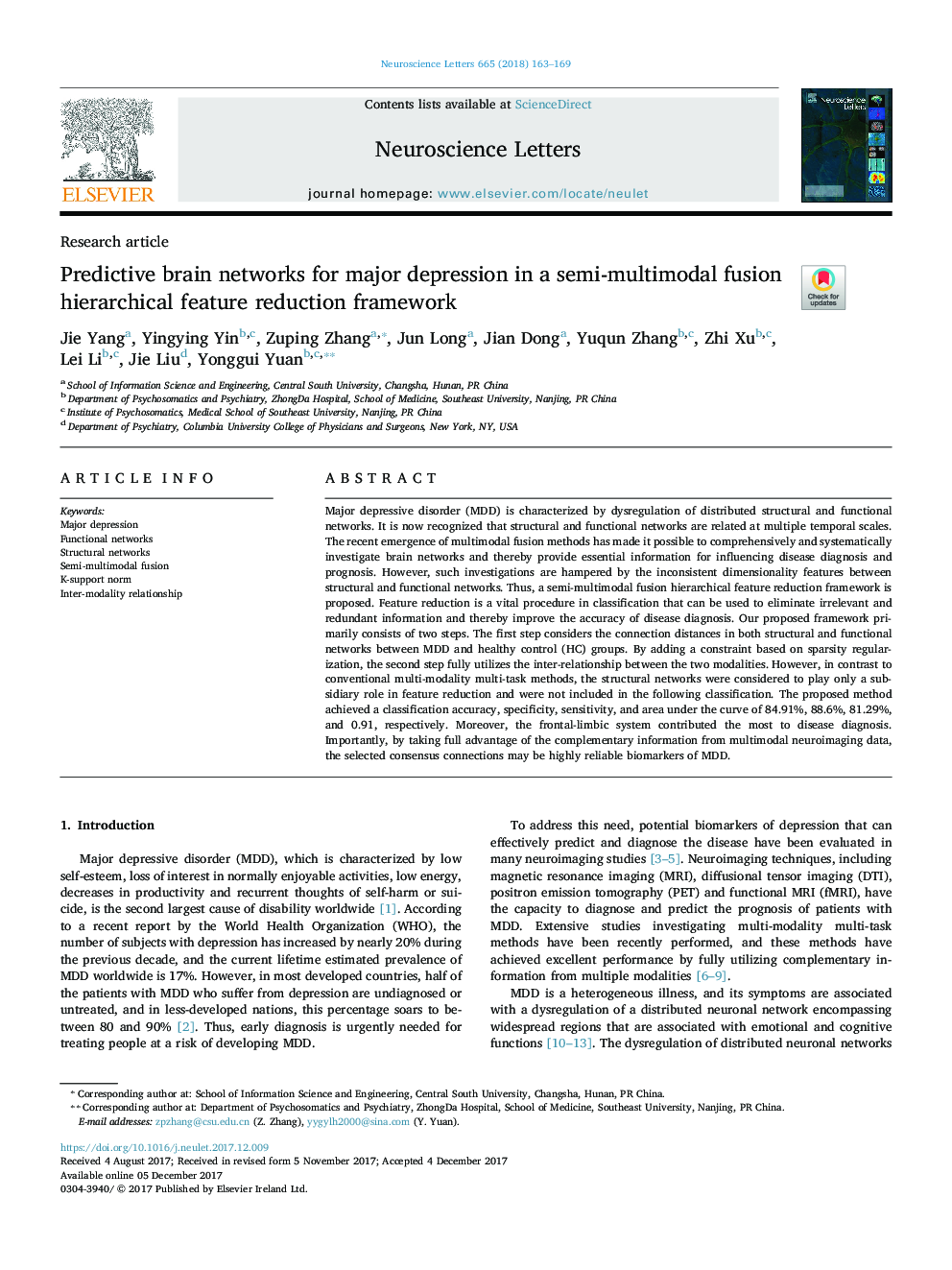| Article ID | Journal | Published Year | Pages | File Type |
|---|---|---|---|---|
| 8841878 | Neuroscience Letters | 2018 | 7 Pages |
Abstract
Major depressive disorder (MDD) is characterized by dysregulation of distributed structural and functional networks. It is now recognized that structural and functional networks are related at multiple temporal scales. The recent emergence of multimodal fusion methods has made it possible to comprehensively and systematically investigate brain networks and thereby provide essential information for influencing disease diagnosis and prognosis. However, such investigations are hampered by the inconsistent dimensionality features between structural and functional networks. Thus, a semi-multimodal fusion hierarchical feature reduction framework is proposed. Feature reduction is a vital procedure in classification that can be used to eliminate irrelevant and redundant information and thereby improve the accuracy of disease diagnosis. Our proposed framework primarily consists of two steps. The first step considers the connection distances in both structural and functional networks between MDD and healthy control (HC) groups. By adding a constraint based on sparsity regularization, the second step fully utilizes the inter-relationship between the two modalities. However, in contrast to conventional multi-modality multi-task methods, the structural networks were considered to play only a subsidiary role in feature reduction and were not included in the following classification. The proposed method achieved a classification accuracy, specificity, sensitivity, and area under the curve of 84.91%, 88.6%, 81.29%, and 0.91, respectively. Moreover, the frontal-limbic system contributed the most to disease diagnosis. Importantly, by taking full advantage of the complementary information from multimodal neuroimaging data, the selected consensus connections may be highly reliable biomarkers of MDD.
Related Topics
Life Sciences
Neuroscience
Neuroscience (General)
Authors
Jie Yang, Yingying Yin, Zuping Zhang, Jun Long, Jian Dong, Yuqun Zhang, Zhi Xu, Lei Li, Jie Liu, Yonggui Yuan,
